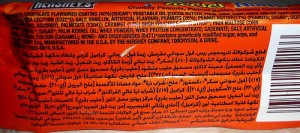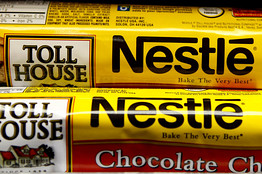School food makes news, endlessly
I can think of many reasons why school food is such a hot topic these days: kids eat a significant portion of their daily calories in schools, schools set an example for what is appropriate for kids to eat, and schools are a learning environment. Here’s the latest on what’s happening on the school food scene:
1. The New York City Education Department announces new rules for school vending machines, as part of its new school wellness policies. According to the account in the New York Times, the vending machines have been empty since the Snapple contract ended in August (Really? That’s not what I observed a couple of weeks ago). The new standards will exclude the worst of the products but the lesser evils will still be competing for students’ food dollars, thereby continuing to undermine the solvency and integrity of the school meal programs.
2. The CDC reports (MMWR, October 5) that junk food is rampant in schools, but the percentage of schools in which children are not permitted to buy junk food or sodas is increasing in at least 37 states.
3. The Government Accountability Office (GAO) takes the USDA to task for not alerting schools when foods in the school meals programs – meat or peanut butter, for example – have been recalled because they are contaminated with dangerous bacteria. Usually, the GAO talks straight to government. I don’t know what happened in this case but here is its first, rather incoherent, recommendation to USDA regarding the USDA’s Food and Nutrition Service (FNS):
To better ensure the safety of foods provided to children through the school meal programs, and to make improvements in three areas related to recalls affecting schools: interagency coordination; notification and instructions to states and schools; and monitoring effectiveness, the Secretary of Agriculture should direct FNS and that the Secretary of HHS should direct FDA to jointly establish a time frame for completing a memorandum of understanding on how FNS and FDA will communicate during FDA investigations and recalls that may involve USDA commodities for the school meal programs, which should specifically address how FDA will include FNS in its prerecall deliberations.
The other recommendations make somewhat more sense. They begin by repeating the first part up through “the Secretary of USDA should direct FNS to”:
- develop guidelines, in consultations with the Agricultural Marketing Service (AMS) and the Farm Service Agency (FSA), to be used for determining whether or not to institute an administrative hold on suspect commodities for school meal programs.
- work with states to explore ways for states to speed notification to schools.
- improve the timeliness and completeness of direct communication between FNS and schools about holds and recalls, such as through the commodity alert system.
- take the lead among USDA agencies to establish a time frame in which it will improve the USDA commodity hold and recall procedures to address the role of processors and determine distributors’ involvement with processed products, which may contain recalled ingredients, to facilitate providing more timely and complete information to schools.
This needs an editor, but you get the idea.
4. The GAO has produced yet another report, this one devoted to getting states to comply with federal rules about meal counting and claims. These are measures designed to make sure that ineligible kids don’t get fed. I wish I knew how much money such measures cost. They are a tragic waste. We need universal school meals. Period.
5. And then there is Jamie Oliver, who has transformed the British school meals system and is now attempting to bring his school food revolution to the United States (see the food issue of the New York Times magazine). One can only wish him luck.



